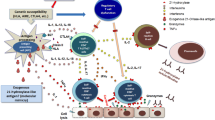Abstract
Purpose
Tatton-Brown-Rahman syndrome (TBRS) is a newly defined genetic entity characterized by overgrowth and intellectual disability, resulting from germline mutations in the gene encoding DNA methyltransferase 3 alpha (DNMT3A). Affected individuals with benign and malignant tumors have been reported; to our knowledge pituitary adenomas (and other tumors identified in our patient) have not yet been described in this syndrome.
Case
We report the case of a 34-year-old woman with TBRS who developed a GH-secreting pituitary macroadenoma and other benign tumors and cystic lesions involving diverse organ systems. Whole-exome sequencing revealed a heterozygous, likely pathogenic variant (c.700_709 del10, p. Gly234ArgfsX79) in exon7 of DNMT3A, and a heterozygous variant of uncertain significance (c.25 C>T, p.Arg9Trp) in exon 1 of the gene encoding aryl hydrocarbon receptor-interacting protein (AIP). The patient failed somatostatin analog treatment, and underwent surgery. The tumor retained AIP expression, and analysis of tumor DNA indicated the presence of both AIP alleles, consistent with no loss of heterozygosity. These findings suggest that the AIP variant was not the primary driver of pituitary adenoma development.
Conclusion
Our case suggests that TBRS might be associated with pituitary adenoma and a broader spectrum of tumors than previously thought, making long-term follow up of these patients crucial to identify tumors early, and to elucidate the clinical spectrum of the disorder for optimization of management.

Similar content being viewed by others
References
Tatton-Brown K, Seal S, Ruark E et al (2014) Mutations in the DNA methyltransferase gene DNMT3A cause an overgrowth syndrome with intellectual disability. Nat Genet 46(4):385–388
Tatton-Brown K, Zachariou A, Loveday C et al (2018) The Tatton-Brown-Rahman syndrome: a clinical study of 55 individuals with de novo constitutive DNMT3A variants. Wellcome Open Res 3:46
Tenorio J, Alarcón P, Arias P, et al (2019) Further delineation of neuropsychiatric findings in Tatton-Brown-Rahman syndrome due to disease-causing variants in DNMT3A: seven new patients. Eur J Hum Genet. https://doi.org/10.1038/s41431-019-0485-3
Kosaki R, Terashima H, Kubota M, Kosaki K (2017) Acute myeloid leukemia-associated DNMT3A p.Arg882His mutation in a patient with Tatton-Brown-Rahman overgrowth syndrome as a constitutional mutation. Am J Med Genet 173(1):250–253
Shen W, Heeley JM, Carlston CM et al (2017) The spectrum of DNMT3A variants in Tatton-Brown-Rahman syndrome overlaps with that in hematologic malignancies. Am J Med Genet 173(11):3022–3028
Xin B, Cruz Marino T, Szekely J et al (2017) Novel DNMT3A germline mutations are associated with inherited Tatton-Brown-Rahman syndrome. Clin Genet 91(4):623–628
Lemire G, Gauthier J, Soucy J, Delrue M (2017) A case of familial transmission of the newly described DNMT3A-Overgrowth syndrome. Am J Med Genet Part A 173(7):1887–1890
Vandeva S, Jaffrain-Rea M, Daly AF, Tichomirowa M, Zacharieva S, Beckers A (2010) The genetics of pituitary adenomas. Best Pract Res Clin Endocrinol Metab 24(3):461–476
Jaffrain-Rea ML, Angelini M, Gargano D et al (2009) Expression of aryl hydrocarbon receptor (AHR) and AHR-interacting protein in pituitary adenomas: pathological and clinical implications. Endocr Relat Cancer 16:1029–1043
Jaffrain-Rea ML, Rotondi S, Turchi A et al (2013) Somatostatin analogues increase AIP expression in somatotropinomas, irrespective of Gsp mutations. Endocr Relat Cancer. 20(5):753–766
Vierimaa O, Georgitsi M, Lehtonen R et al (2006) Pituitary adenoma predisposition caused by germline mutations in the AIP gene. Science 312(5777):1228–1230
Caimari F, Hernández-Ramírez LC, Dang MN et al (2018) Risk category system to identify pituitary adenoma patients with AIP mutations. J Med Genet 55(4):254–260
Ma HS, Wang EL, Xu WF et al (2018) Overexpression of DNA (cytosine-5)-methyltransferase 1 (DNMT1) And DNA (cytosine-5)-methyltransferase 3A (DNMT3A) is associated with aggressive behavior and hypermethylation of tumor suppressor genes in human pituitary adenomas. Med Sci Monit. 13(24):4841–4850
Lavrentaki A, Paluzzi A, Wass J, Karavitaki N (2017) Epidemiology of acromegaly: review of population studies. Pituitary. 20(1):4–9
Author information
Authors and Affiliations
Contributions
All authors contributed to the study conception, design and approved the final manuscript.
Corresponding author
Ethics declarations
Conflict of interest
The authors declare that they have no conflicts of interest.
Informed consent
Written informed consent was obtained from the guardian of the patient included in the study.
Additional information
Publisher's Note
Springer Nature remains neutral with regard to jurisdictional claims in published maps and institutional affiliations.
Rights and permissions
About this article
Cite this article
Hage, C., Sabini, E., Alsharhan, H. et al. Acromegaly in the setting of Tatton-Brown-Rahman Syndrome. Pituitary 23, 167–170 (2020). https://doi.org/10.1007/s11102-019-01019-w
Published:
Issue Date:
DOI: https://doi.org/10.1007/s11102-019-01019-w



